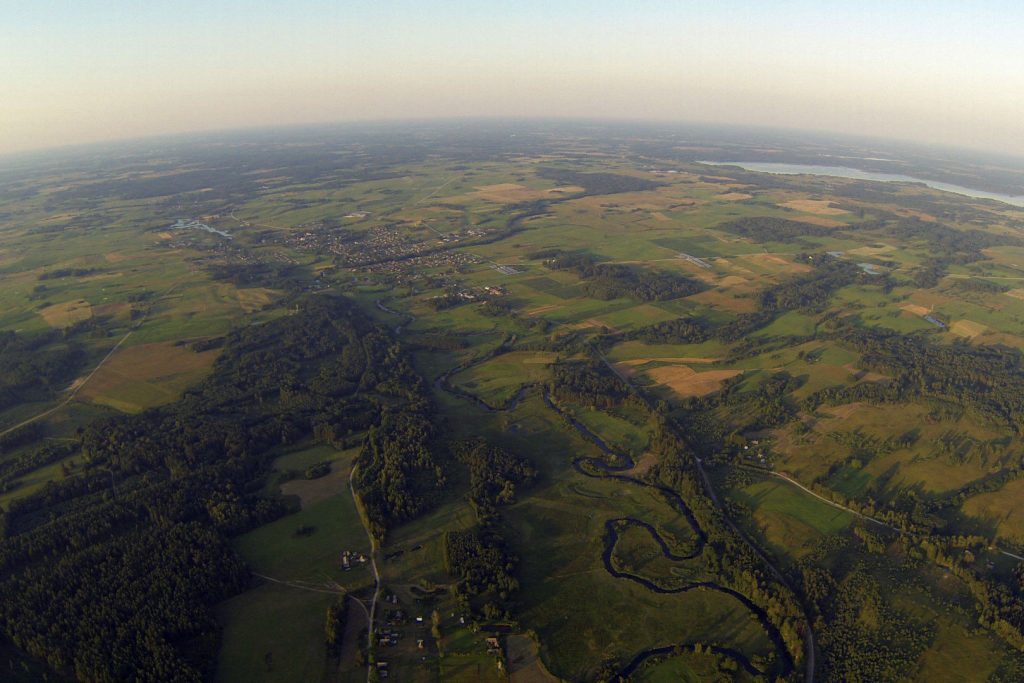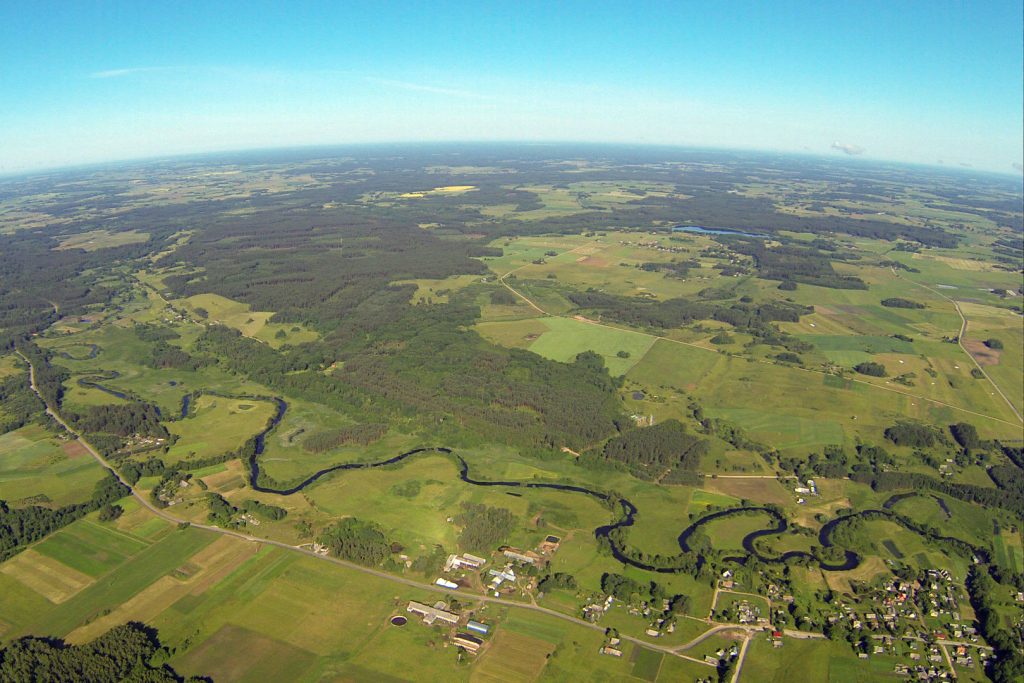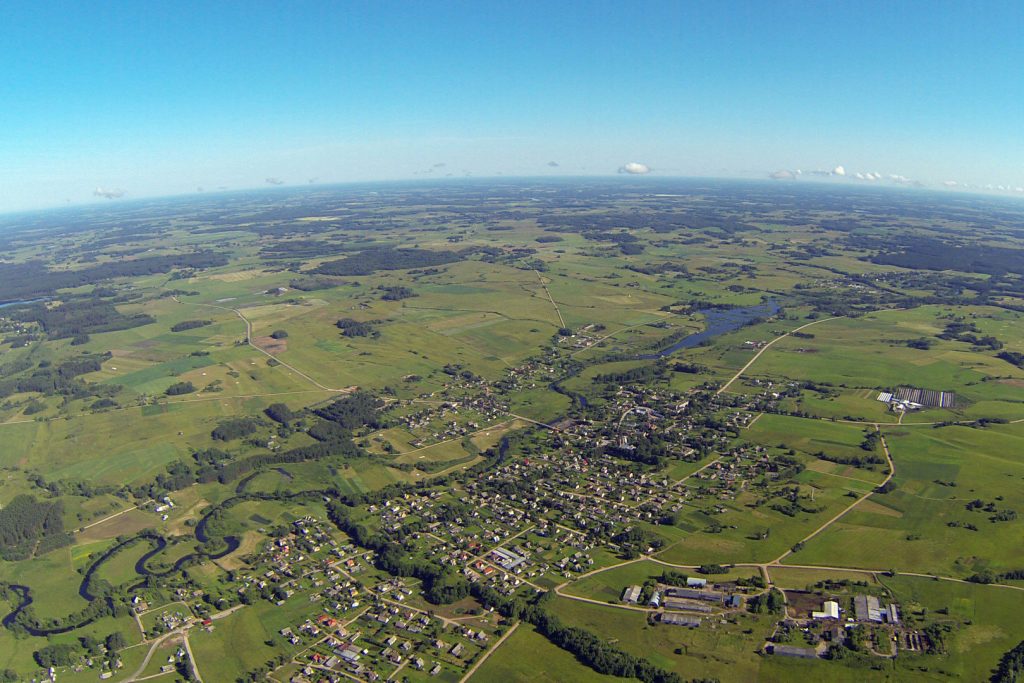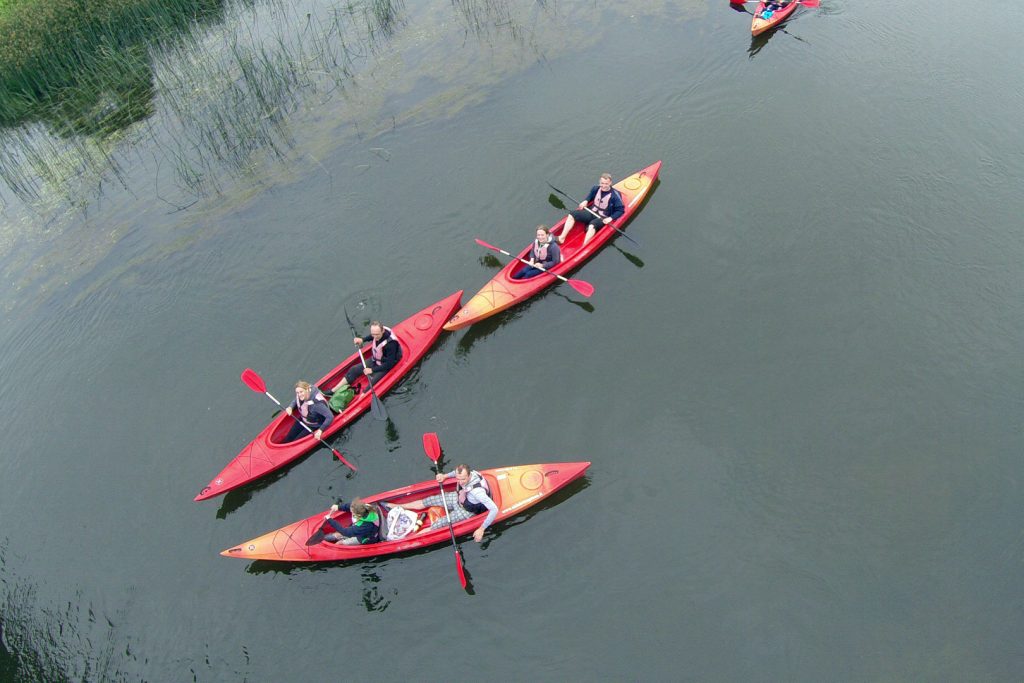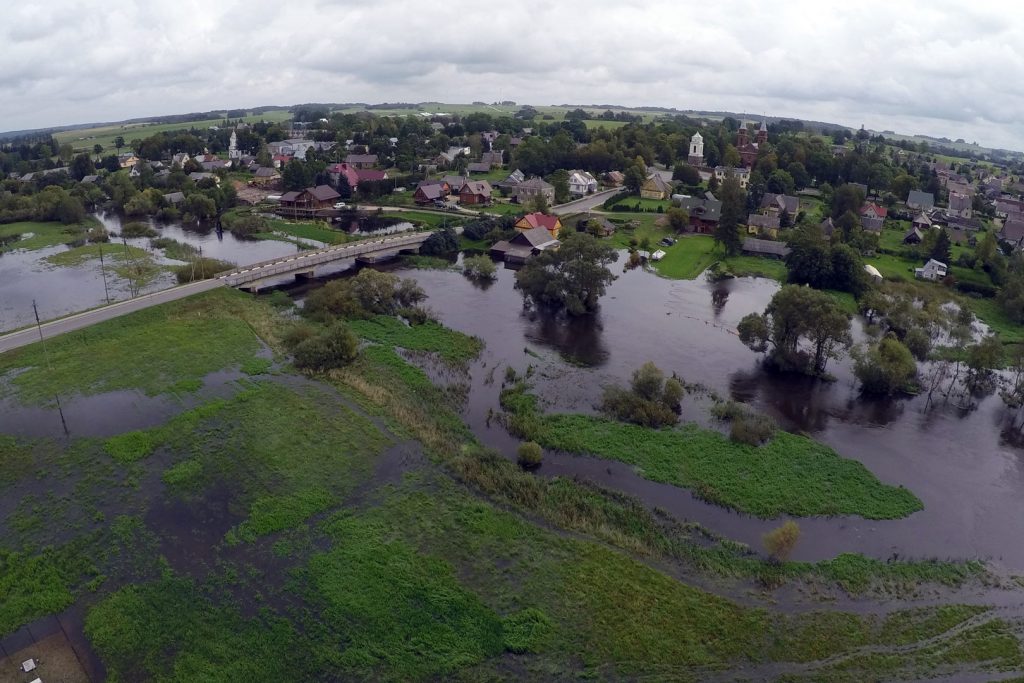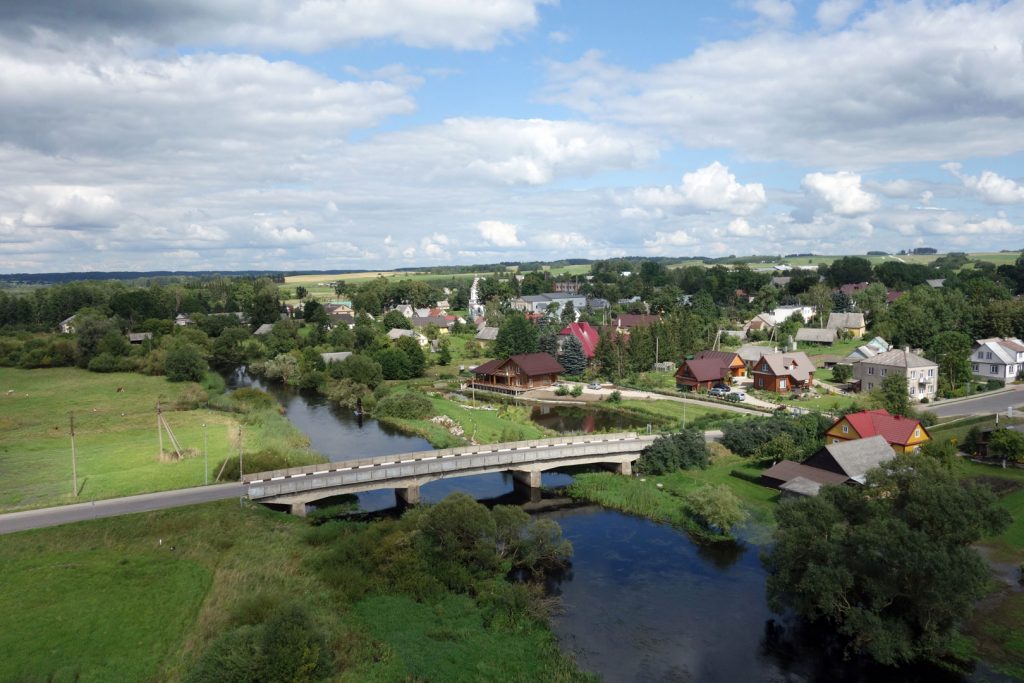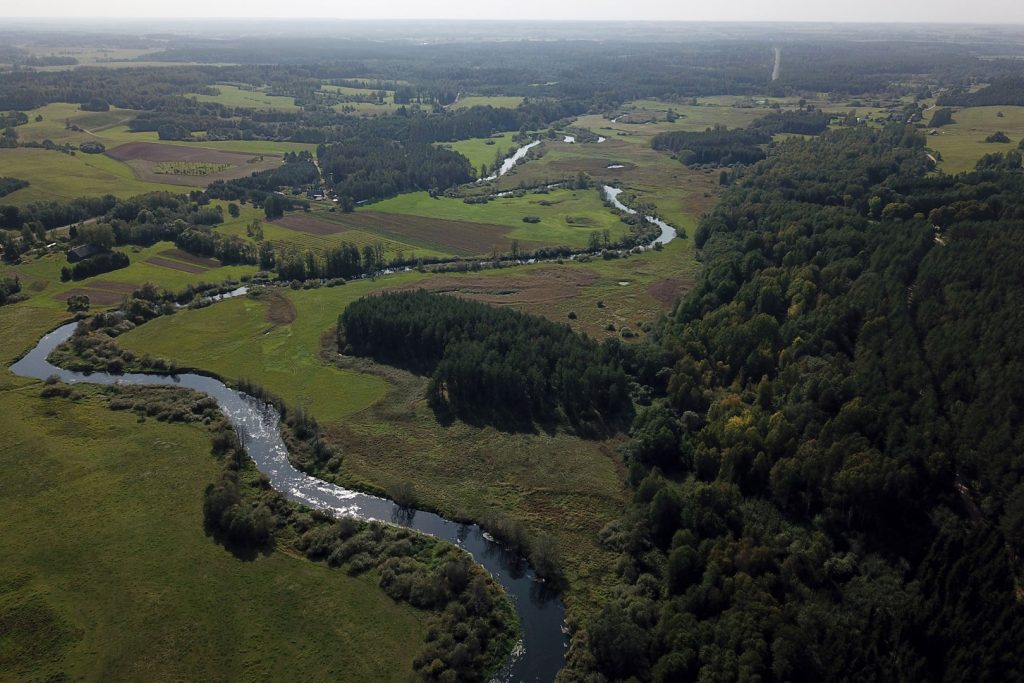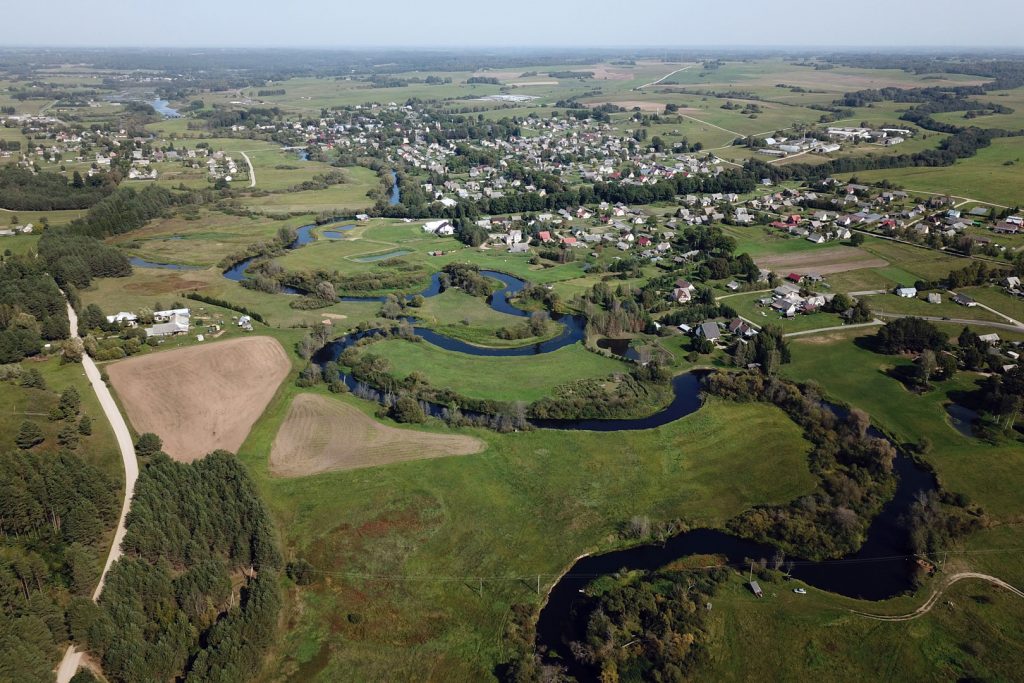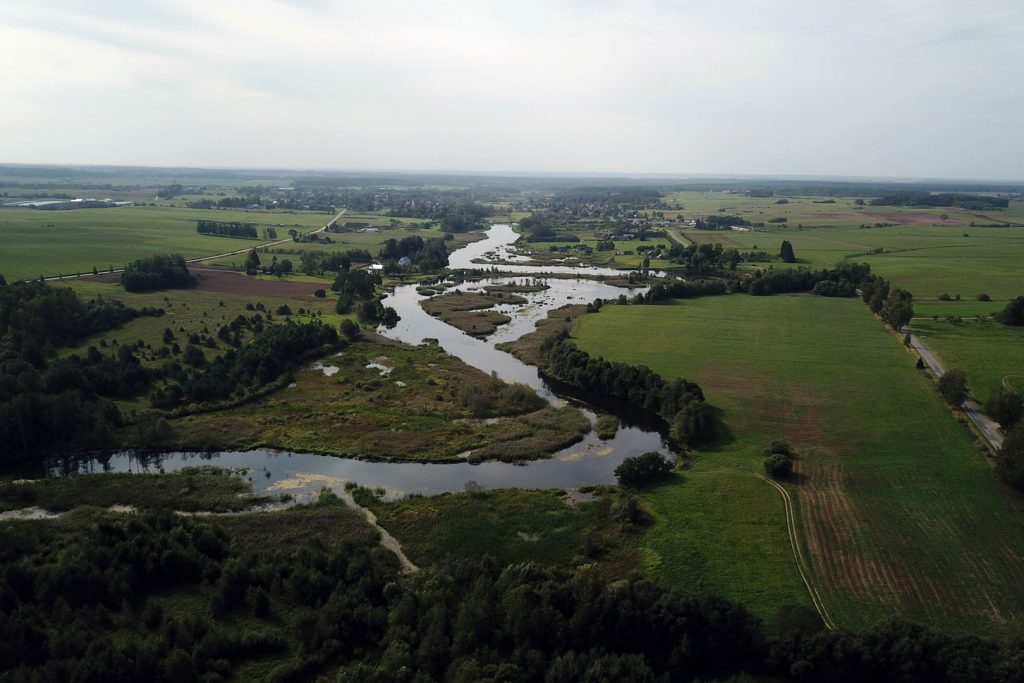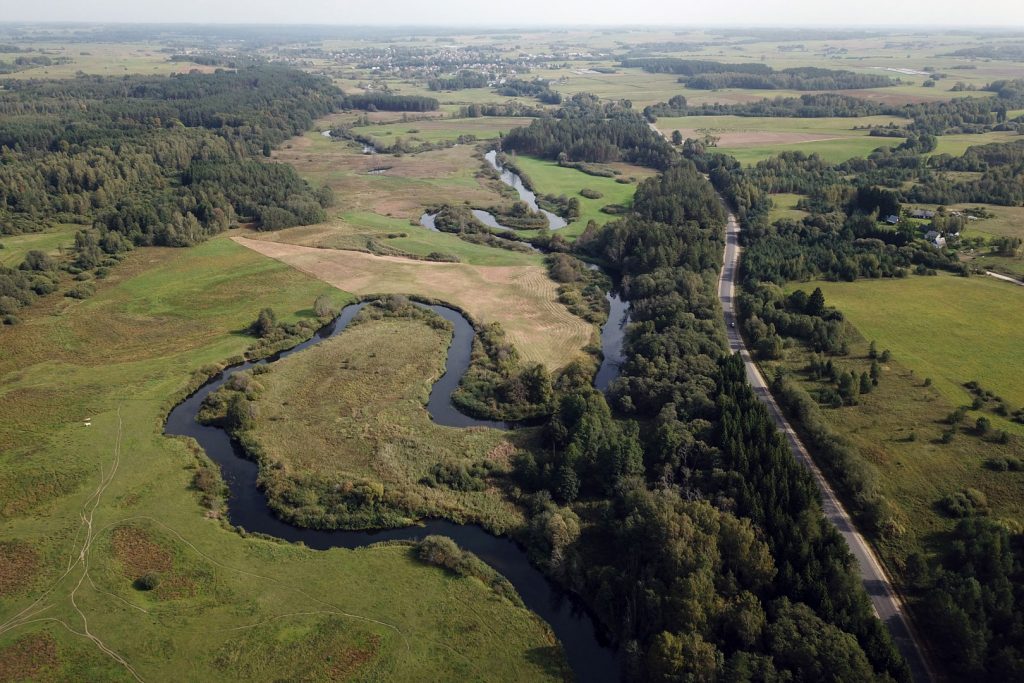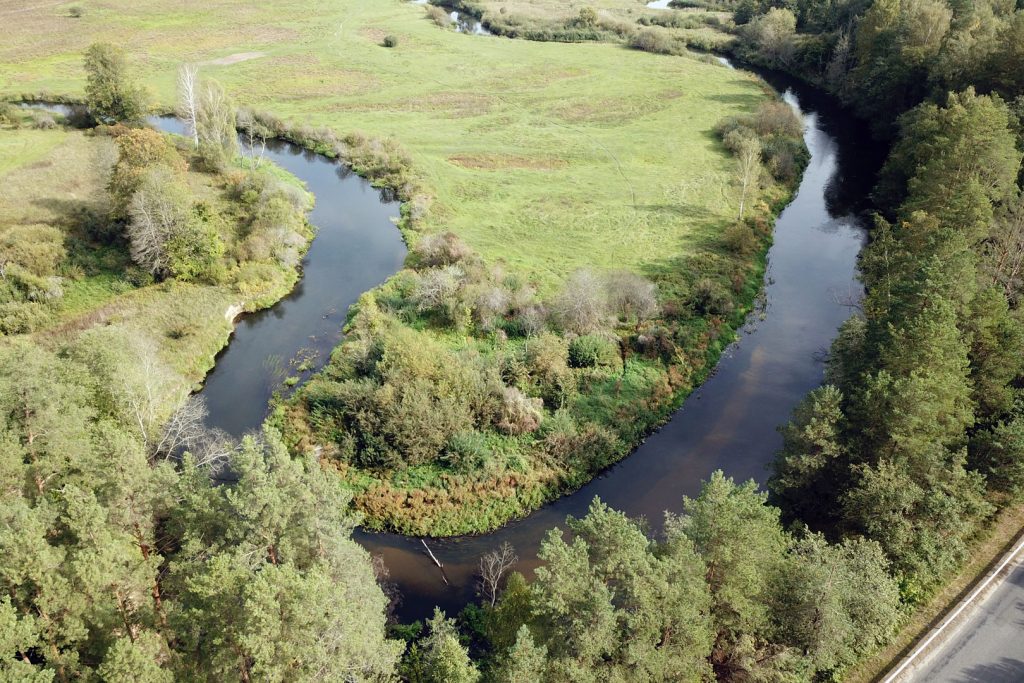Šventoji
The largest river in the district which, up to Paštys lake, is fed by the basin whose area is 1436 km². Flowing out of Paštys lake, the river makes loops in Utena district south-westwards for about 30 km and reaches the boundary of Anykščiai district, 140 km from the mouth. This middle part of Šventoji is the most winding, because the length of the straight line connecting its ends is only 17 km. The river flows at the foot of Aukštaičiai Height, at the edge of the former glacier. Below Paštys lake its valley is already distinctly marked, it has a floodplain flooded during the flood season and two benches. On its banks there are villages of Likančiai, Ilčiukai, Degėsiai, Kaniūkai, Šeimyniškiai, Joniškiai, Vėželiai and Užpaliai town. In the last kilometers in Utena land the Šventoji is accompanied by Vyžuonos forest on the left. Two reinforced concrete bridges span the river’s banks: one in Užpaliai, the other in Kunigiškiai, on the junction of Utena and Anykščiai districts. In the territory of Utena district the river bed falls down by 15.7 m, so its average incline is 0.052%. The fastest flow of the river happens in the section of Ilčiukai-Užpaliai (the incline reaches 0.066%). That is why even three water mills were built here: Ilčiukai (demolished), Degėsiai (built in 1922, later demolished, the height of the dam 2.8 m) and Užpaliai (built in 1836 m, the height of the dam 3.2 m). The hydrological regimen of the river was observed in 1955-1964 by Užpaliai water measurement station. According to its data, the level of water in Šventoji (near Užpaliai) fluctuates on average 3.3 m a year. The river is the wateriest in spring when the yields of water reach on average 58 m³/s, and during especially big floods, for example in 1958, even 98 m³/s. In summer the yields fall down to 4.2 m³/s, and in extremely dry year – up to 2.9 m³/s. Sometimes, at the beginning of winter, jams of trash-ice form in the river bed and the level of water rises fast up to 10-40 cm.
In the boundaries of Utena district (going downstream) the most important inflows of the river Šventoji are: Alauša, Karčiupis, Ringys, Bradesa, Girbys, Vyžuona from the right side, and Narupis, Ūdrokšlis and Nasvė, from the right.
Kunigiškiai water mill
It used to be a stonework building, covered with shingles, in Kunigiškiai village, on the left bank of the river Šventoji near a draining canal. The mill started in 1902. For its construction the governor’s permission had been obtained. In the mill there operated two home-made turbines of 10 and 15 horsepower, two pairs of grindstones of 48 inches. There were millstones for fine quality flour, rotating saw for sawing wood, an electric dynamo. In the dam there was a spare passageway for water. There was always enough water for one pair of millstones.
Up to 1940 the land under the mill and the building were rented from the community of Kunigiškiai village, for which the village farmers’ grain was ground for free.
In 1941the buildings and the mill were sold to the teacher of mathematics Jonas Dailidė, who together with the family moved from Tauragė to live in Kunigiškiai, to work here and at the same time to teach in Utena gymnasium. He purchased the land and the buildings from the village community.
After the war, because of the threat of exile, the Dailidės family moved to Kaunas. The mill operated for some time; however, the authorities of the collective farm did not take care of it and its fate was similar to that of Vyžuonos mill, i.e. it was looted, brought apart and deteriorated. Only in 2000 the owners managed to recover the homestead and instead of the mill a new house was erected with some remaining elements of the old mill – its foundations and the stone wall.
Žalioji water mill
It used to be a three-storey stonework building, covered with shingles which stood in the village of Žalioji, on the left bank of the river Šventoji. There were installed two water turbines and traditional equipment for the mill: two pairs of grindstones, millstones for fine quality flour, rotating saw, granary. In a separate building there was a rough cloth fulling-mill and woodworker’s workshop. An electric generator supplied power for self-consumption. When the dam of the mill flooded the fields of Žalioji village farmers, their grain was ground for free.
The mill was built and equipped by its owner Karvelis, who had been to America where he had earned money, came to Lithuania and invested it in the construction of the mill.
During the Soviet times the mill worked for some time and served the needs of the collective farm, but its fate was a traditional one – it was destroyed and its equipment and the remains of the buildings were looted.
